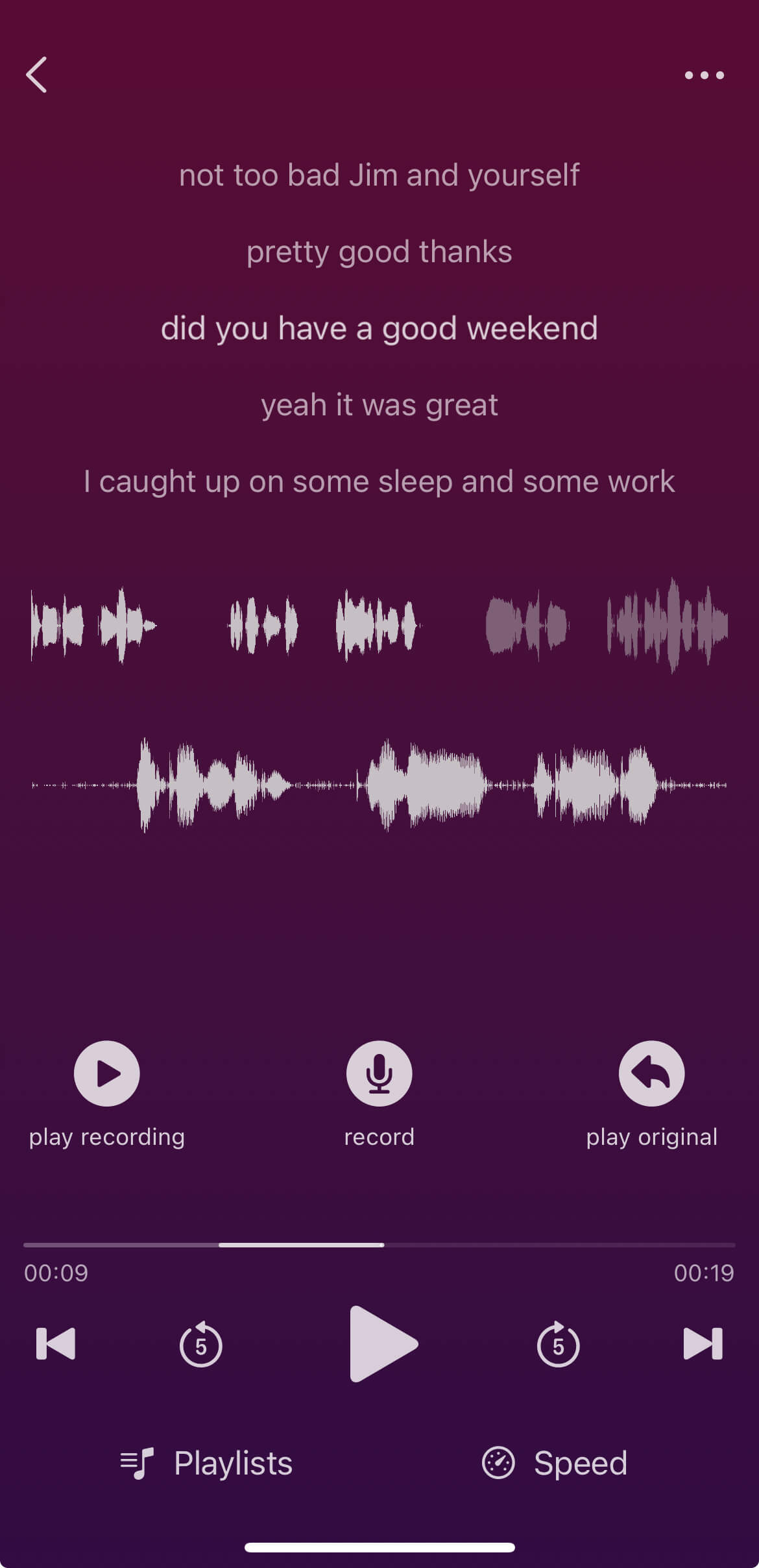Improve Your Spoken English with the Echo Method
8/12/2025
Improve Your Spoken English with the Echo Method | Karen Chung

In this guide, you'll learn how to use the Echo Method for effective shadowing listening practice and to improve your natural intonation.
Imagine you’re learning to play the piano: you read sheet music,
analyze it, memorize it, and understand the theory…
but can you actually play?
Maybe in your mind, but your fingers don’t move.
Another example —
Imagine you’re teaching Mandarin to a foreign student,
starting with the four tones.
In Mandarin, each syllable has a fixed tone,
and the tone determines the meaning.
If the tone is wrong, you won’t be understood.
You show your friend a tone chart.
Will they read it correctly? Sound like a native speaker?
Most would laugh and say, “Probably not.”
Then I ask, “How would you teach this?”
They reply, “I’d say it aloud and have them repeat.”
And I say, “Exactly!”
So why, when teaching English,
do we rely on black-and-white text and a little audio,
expecting learners to develop good pronunciation?
The result is:
if your pronunciation is wrong, you won’t be understood.
In Mandarin, meaning depends on tone; in English, it depends on vowels, consonants, and stress.
Example: rain, ran, wren, rang.
Four different words, four different pronunciations.
If you ignore them, they sound the same.
Another example: bat, bad, bet, bed, bait.
The difference between bat and bad is the voiced final consonant.
Vowels before a voiced consonant are longer.
Many dismiss this as just a “foreign accent” and say:
“As long as people understand me, it’s fine.”
Yes, maybe they understand, but how much effort does it take the listener?
What Language Learning Requires
Strong motivation and a clear goal.
What is your goal?
If it’s truly important to you, your method changes.
If your life or career depends on it, you won’t settle for a half-hearted approach.
Along with motivation, you need an effective learning method.
When I teach, I read a sentence and ask the student to repeat.
But often, they start speaking before I’ve finished.
That means they’re not really listening:
they’re just reading or trying to memorize.
The Echo Method
The human brain has a capacity called echoic memory.
When you hear a sound, your brain “replays” it briefly.
This can be used to improve pronunciation and listening skills.
Steps:
- Get audio and transcript, divide into short segments.
- Understand each word, expression, and cultural context.
- During practice: listen to 3–4 words, then pause.
Don’t repeat immediately:
listen → form a mental image → speak aloud.
This creates a cycle: listen → visualize → speak.
With repetition, the sound moves into long-term memory.
Recommended Material
Use quality series and films, like The Big Bang Theory or Kiwi Girl.
Daily practice improves pronunciation, vocabulary, and grammar.
Just 10 minutes a day is enough.
3 Key Points
- Think not only about yourself, but also about the listener’s experience.
- Practice not only for exams, but to enjoy real conversations.
- Spend 10 minutes a day, every day.
Recommended Tool
A good learning method, paired with the right tool, multiplies results.
We recommend Vocheo, an app specially designed for the Echo Method:
offline deep listening, shadowing, subtitles, waveform comparison,
and AI-assisted phrase practice to improve pronunciation, intonation, and fluency.
Source
Based on Karen Chung’s talk at TEDxNTUST:
How to Learn English Speaking with the Echo Method
